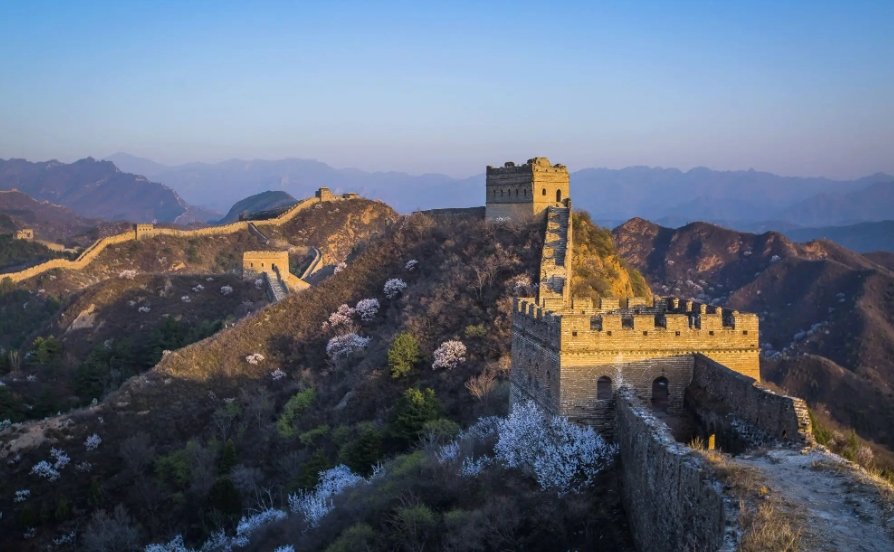
The Great Wall: A History of Breaches and a Shortcut Gone Viral
China's Great Wall, a UNESCO World Heritage site and a testament to human ingenuity and perseverance, has long been romanticized as an impenetrable barrier. However, history paints a different picture. Over its millennia-long existence, the Wall has been breached, bypassed, and even dismantled. While some instances are shrouded in the mists of time, others, like the recent viral story of two construction workers, are very much a product of the digital age.
Genghis Khan and the Yuan Dynasty:
The Mongol warlord, Genghis Khan, stands as one of the most notable figures to have successfully challenged the Great Wall's might. In the early 13th century, Khan united the Mongol tribes and set his sights on conquering China. While the Wall itself was formidable, it was ultimately the strategic brilliance of the Mongols that led to their success. Khan's forces exploited weaknesses in the Wall's defenses, utilized superior tactics, and, most importantly, exploited internal divisions within China. By forging alliances with disgruntled factions and employing skilled Chinese engineers, Khan's army bypassed key sections of the Wall, effectively neutralizing its defensive advantage and ushering in the Yuan dynasty.
The Manchus and the Qing Dynasty:
Centuries later, the Great Wall faced another significant challenge from the Manchu people hailing from the northeast. Unlike the Mongols who relied on military prowess, the Manchus' rise to power involved a blend of military might and political maneuvering. They gradually gained control of territories beyond the Wall, consolidating their power and eventually winning over key Chinese generals guarding the Wall's gates. This strategic infiltration culminated in the fall of the Ming Dynasty and the establishment of the Qing Dynasty in 1644, highlighting how internal strife and strategic alliances could prove more potent than even the most imposing physical barrier.
A Modern-Day Shortcut?
Fast forward to the 21st century, and the Great Wall faces a different kind of breach. In September 2023, news outlets worldwide reported on two construction workers, Zheng and Wang, who allegedly used an excavator to create a gaping hole in a section of the Ming-era Wall. Their reason? To create a shortcut for their construction work. Images of the damage, widely circulated on social media, sparked outrage and highlighted the ongoing struggle to balance preservation efforts with development. While the incident may lack the historical weight of a Genghis Khan conquest, it serves as a stark reminder of the Wall's vulnerability, not to invading armies, but to human negligence and disregard for cultural heritage.
The Great Wall: More Than Just Bricks and Mortar:
The stories of these breaches, from Genghis Khan to the unfortunate incident involving Zheng and Wang, underscore a crucial point: the Great Wall is more than just bricks and mortar. It's a symbol of China's enduring spirit and a reminder of the complexities of human history. While its physical integrity might be breached, its symbolic power continues to resonate, prompting important conversations about conservation, respect for cultural heritage, and the lessons we can learn from the past.
Q&A
Q1: Was the Great Wall ever effective in stopping invasions?
A1: While not entirely impenetrable, the Great Wall did serve as a significant deterrent for smaller-scale invasions and raids. It forced potential invaders to funnel through heavily fortified passes, making it easier for defenders to repel attacks. However, as demonstrated by the Mongols and Manchus, the Wall's effectiveness was ultimately limited by factors like strategic planning, internal divisions within China, and political maneuvering.
Q2: How has the Great Wall been maintained throughout history?
A2: Maintenance of the Great Wall has been a constant challenge, subject to the resources and priorities of ruling dynasties. While some periods saw extensive renovations and fortifications, others witnessed neglect and decay. Today, sections of the Wall are meticulously restored and protected as national treasures, while others remain vulnerable to natural erosion and human activity.
Q3: What is being done to protect the Great Wall in modern times?
A3: The Chinese government has implemented numerous measures to protect and preserve the Great Wall, including the establishment of national parks, strict regulations against vandalism and unauthorized construction, and ongoing restoration projects. Public awareness campaigns emphasize the Wall's cultural significance and the importance of responsible tourism. International collaboration also plays a role, with organizations like UNESCO providing support for conservation efforts.